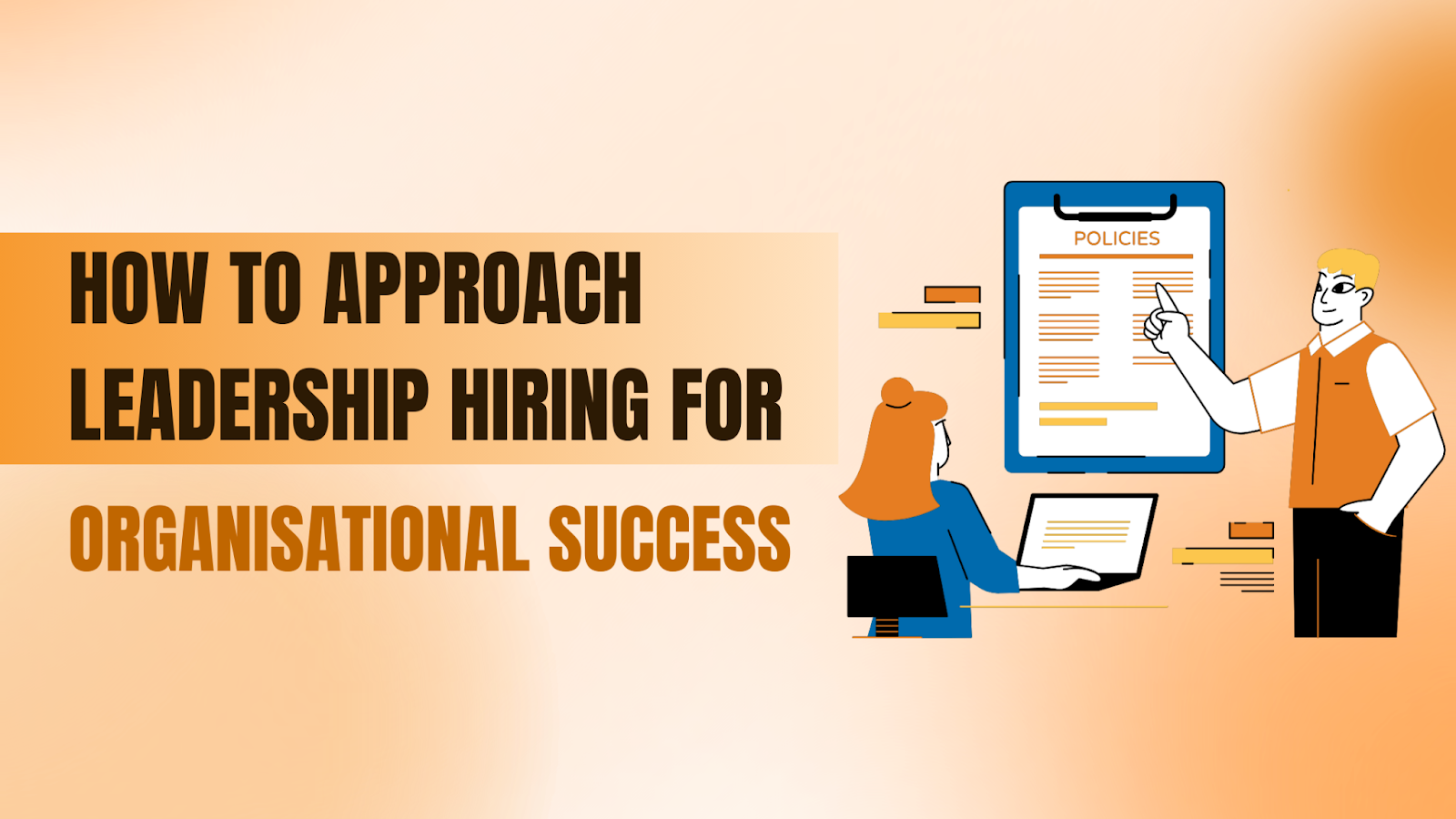If you believe that hiring for leadership is merely about filling a senior position in your company, you are mistaken. Leadership hiring is about finding individuals who will drive change, inspire teams, and lead your organisation toward long-term growth.
As businesses strive to remain competitive, effective leadership has become a vital factor in achieving success. Studies show that companies with strong leadership teams are 13 times more likely to outperform their competitors in terms of revenue growth.
But what does the leadership hiring process entail? How do you approach finding the right leaders for your business? Whether you’re hiring for C-suite positions or high-level managers, understanding leadership hiring is essential to building a robust talent pipeline that supports your company’s vision.
In this blog, we will provide key strategies and best practices for the leadership hiring process to help you find the right leaders for your organisation.
In a Nutshell
- Leadership hiring is the process of identifying and recruiting individuals for senior-level roles who can drive change and ensure long-term growth in an organization.
- Unlike traditional recruitment, it focuses on strategic positions requiring deep expertise and cultural fit.
- Effective leadership is crucial for shaping company culture, driving employee engagement, and enabling adaptation to market changes, particularly in rapidly evolving sectors like IT, BFSI, manufacturing, and shared services.
- Challenges such as talent scarcity and high attrition rates emphasize the need for a structured and strategic approach to leadership hiring.
What is Leadership Hiring?
Leadership hiring is the process of sourcing, assessing, and selecting individuals for high-level positions within an organisation.
Unlike typical recruitment, leadership hiring focuses on tactical roles that require a unique blend of skills, experience, and cultural fit to lead teams, shape company culture, and drive business success.
Leadership Hiring vs. Traditional Recruitment
| Aspect | Leadership Hiring | Traditional Recruitment |
| Focus | Senior-level, executive, and strategic roles | Entry to mid-level roles across all functions |
| Skills & Experience | Requires deep industry expertise, leadership skills, and strategic vision | Often focused on functional skills and role-specific experience |
| Process | Involves multiple assessments, cultural fit evaluations, and long-term potential | Typically involves simpler interviews and skill-based tests |
| Candidate Pool | Smaller, highly curated pool of experienced professionals | Larger pool of candidates with varying levels of experience |
| Timeframe | Longer, due to in-depth evaluation and search for the perfect match | Generally shorter, based on immediate hiring needs |
How Leadership Shapes Culture and Drives Growth
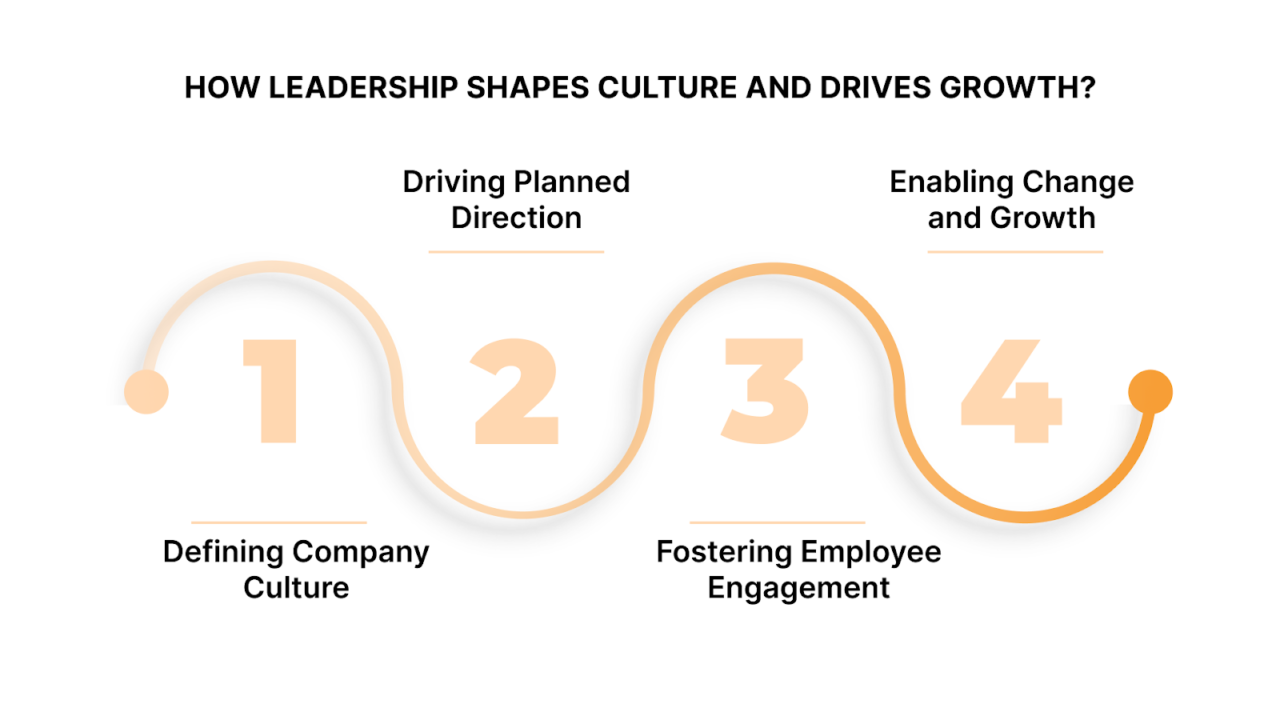
Leaders shape the very DNA of an organisation. Their decisions, behaviours, and communication styles set the tone for the entire workforce, influencing engagement, productivity, and innovation.
- Defining Company Culture: Leaders model values and workplace norms that become embedded in daily operations.
- Driving Planned Direction: Leadership ensures that business goals are clear, focused, and aligned with market realities.
- Fostering Employee Engagement: Effective leaders inspire trust, motivation, and loyalty, reducing attrition rates and improving performance.
- Enabling Change and Growth: They champion transformation initiatives and help organisations adapt to evolving challenges.
Why Leadership Hiring Matters for Indian Enterprises
Effective leadership is crucial to the success of any organisation, especially in India’s rapidly evolving business environment. As companies in sectors such as IT, BFSI, manufacturing, and shared services adapt to rapid changes, effective leadership can drive transformation, promote innovation, and ensure sustainable growth.
The Transformational Role of Leadership in Key Sectors
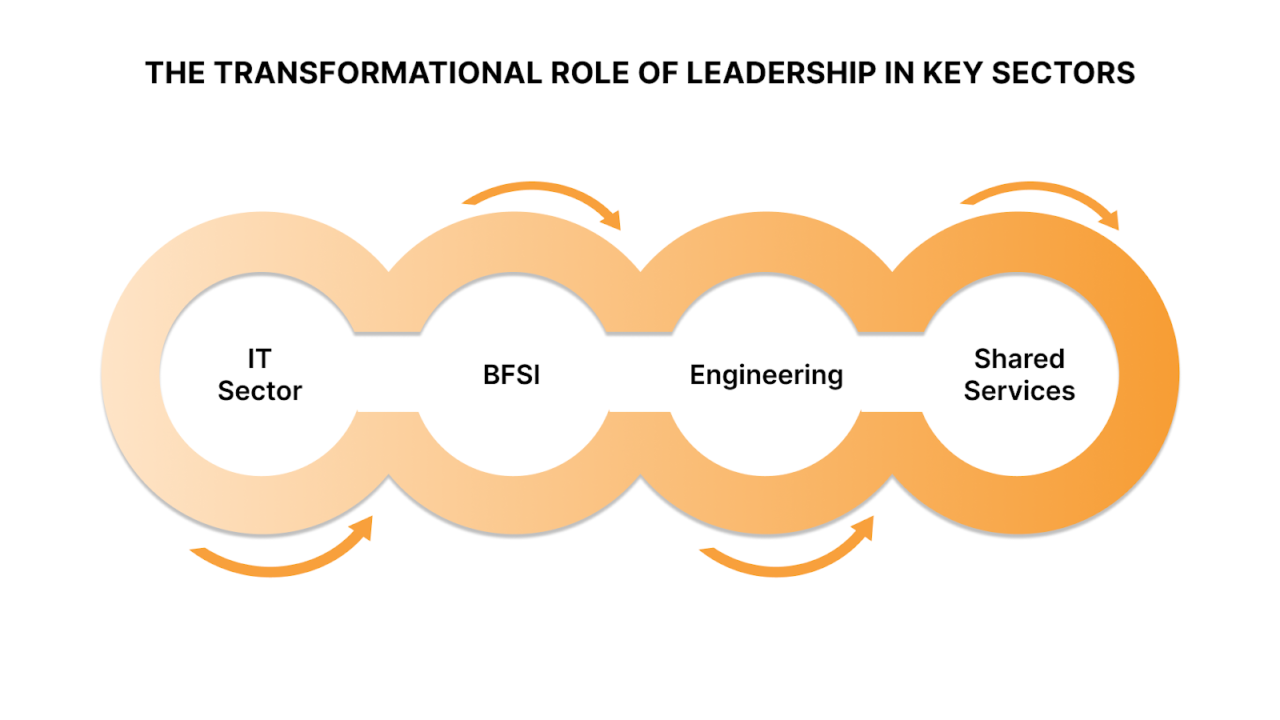
In India’s most dynamic sectors, leadership plays a transformational role:
- IT Sector: The rapid pace of technological advancements requires leaders who can steer innovation and manage cross-functional teams effectively.
- BFSI (Banking, Financial Services, and Insurance): In this highly regulated sector, leaders must strike a balance between compliance and business agility, ensuring both profitability and sustainability.
- Manufacturing & Engineering: Leaders are needed to drive operational efficiency, lead digital transformation, and manage supply chain complexities.
- Shared Services: As businesses expand, effective leadership is essential to streamline operations and manage multiple functions across different geographies.
However, Indian enterprises face unique leadership hiring challenges:
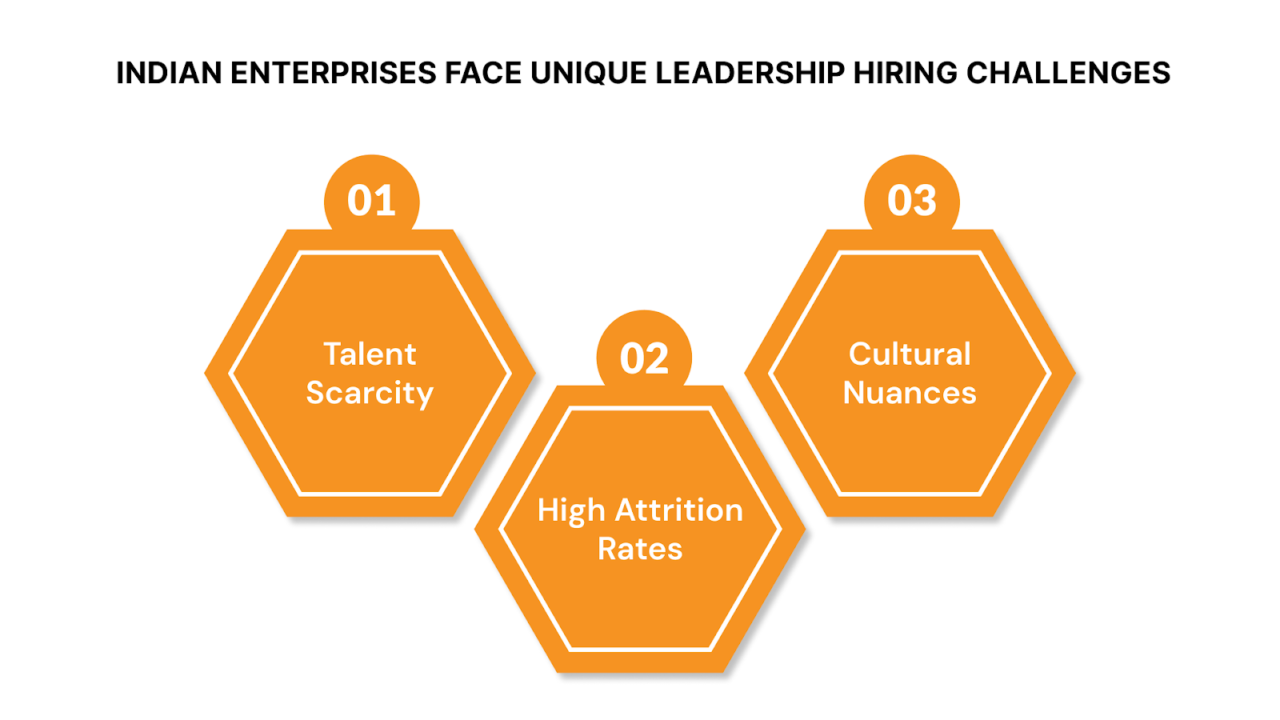
- Talent Scarcity: Highly skilled and visionary leaders are in short supply, resulting in fierce competition.
- High Attrition Rates: Retaining top leadership talent is challenging, as turnover causes disruptions.
- Cultural Nuances: India’s diverse business landscape demands leaders with a deep understanding of local cultures and practices.
Building on the critical importance of leadership hiring, the next step is to understand how to approach this complex process strategically.
How to Approach Leadership Hiring
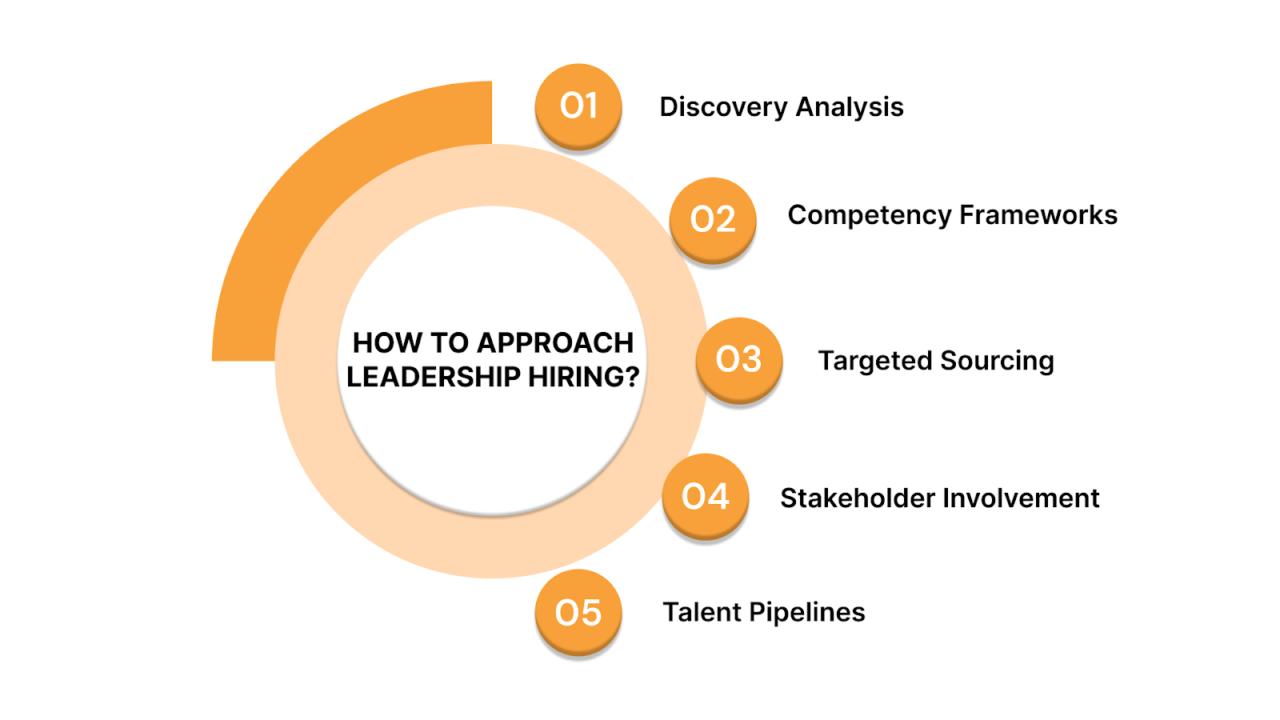
40% of new executives fail within the first 18 months. This highlights the critical need for a more thorough, well-structured leadership hiring approach.
Leadership hiring transcends a simple recruitment process; it represents a collaboration between the hiring organisation and the recruitment partner, rooted in a comprehensive understanding of business objectives, organisational culture, and market conditions.
Here’s how you can approach leadership hiring for your organisation:
1. Conduct Consultative Discovery and Needs Analysis
Before initiating the leadership hiring process, it is essential to engage in a consultative discovery process. This involves detailed discussions with key stakeholders: CHROs, business unit heads, and senior management to identify:
- The specific leadership gaps impacting business strategy.
- The critical success factors for the role.
- Desired leadership style and cultural attributes to complement the existing leadership team.
- Short-term and long-term objectives that the new leader is expected to achieve.
2. Develop Leadership Competency Models and Frameworks
One of the foundational elements in a successful leadership hiring approach is the creation of a competency model tailored to the role and industry. These frameworks go beyond generic leadership qualities to codify:
| Competency Area | Key Competencies | Why It Matters |
| Strategic Thinking | Visionary Thinking, Business Acumen, Innovation | Drives long-term growth with strong business foresight. |
| Decision-Making | Analytical Thinking, Risk Management, Problem-Solving | Enables informed choices and quick, effective problem-solving. |
| Emotional Intelligence | Empathy, Self-Awareness, Social Skills | Builds trust, fosters collaboration, and resolves conflicts efficiently. |
| People Management | Team Building, Coaching, Conflict Management | Maximises team performance and nurtures leadership in others. |
| Change Management | Adaptability, Resilience, Continuous Learning | Leads through change and keeps teams agile in dynamic environments. |
| Communication | Clear Communication, Active Listening, Persuasion | Aligns teams, inspires action, and influences key stakeholders. |
| Cultural Fit | Organisational Alignment, Integrity, Core Values | Ensures leadership strengthens company culture and drives shared values. |
| Results Orientation | Goal Setting, Performance Management, Accountability | Keeps teams focused on delivering measurable business outcomes. |
| Leadership Presence | Confidence, Credibility, Influencing | Inspires teams and stakeholders, especially in high-pressure moments. |
| Stakeholder Management | Relationship Building, Negotiation, Customer Focus | Cultivates key relationships and strengthens external partnerships. |
3. Engage Domain-Specialist Recruiters for Targeted Sourcing
Leadership talent is often niche and highly sought after, requiring recruiters who have a deep understanding of the specific industry and leadership ecosystem. Domain-specialist recruiters bring:
- Access to passive candidates who are not actively seeking but match unique leadership profiles.
- Insight into market compensation trends and candidate motivations.
- Ability to tailor candidate engagement and pitch based on sector nuances.
- This precision reduces time-to-hire and improves quality-of-hire outcomes.
4. Ensure Multi-Stakeholder Involvement Throughout the Process
Given the high stakes, leadership hiring must involve a panel of diverse stakeholders from across HR, business units, and, in some cases, the board. This:
- Facilitates a comprehensive evaluation of candidates’ technical and cultural alignment
- Ensures collective ownership and risk mitigation.
- Builds buy-in for the candidate, aiding smoother integration post-hire.
5. Build Leadership Talent Pipelines in India’s Core Hubs
Sustained leadership success requires forward-thinking pipeline development. Focusing on India’s major talent pools across Hyderabad, Bengaluru, Chennai, Pune, Delhi NCR, and Mumbai allows companies to:
- Tap into diverse leadership talent with regional business insight.
- Maintain a ready pool of potential successors and interim leaders.
- Adapt to changing business needs with agility, shortening reaction time to leadership vacancies.
Also Read: Recent Recruitment Trends for 2025
To build on well-defined leadership competencies, the next step is to implement a structured hiring process that purposefully aligns these competencies with your organisation’s goals.
The Leadership Hiring Process Explained Step-by-Step
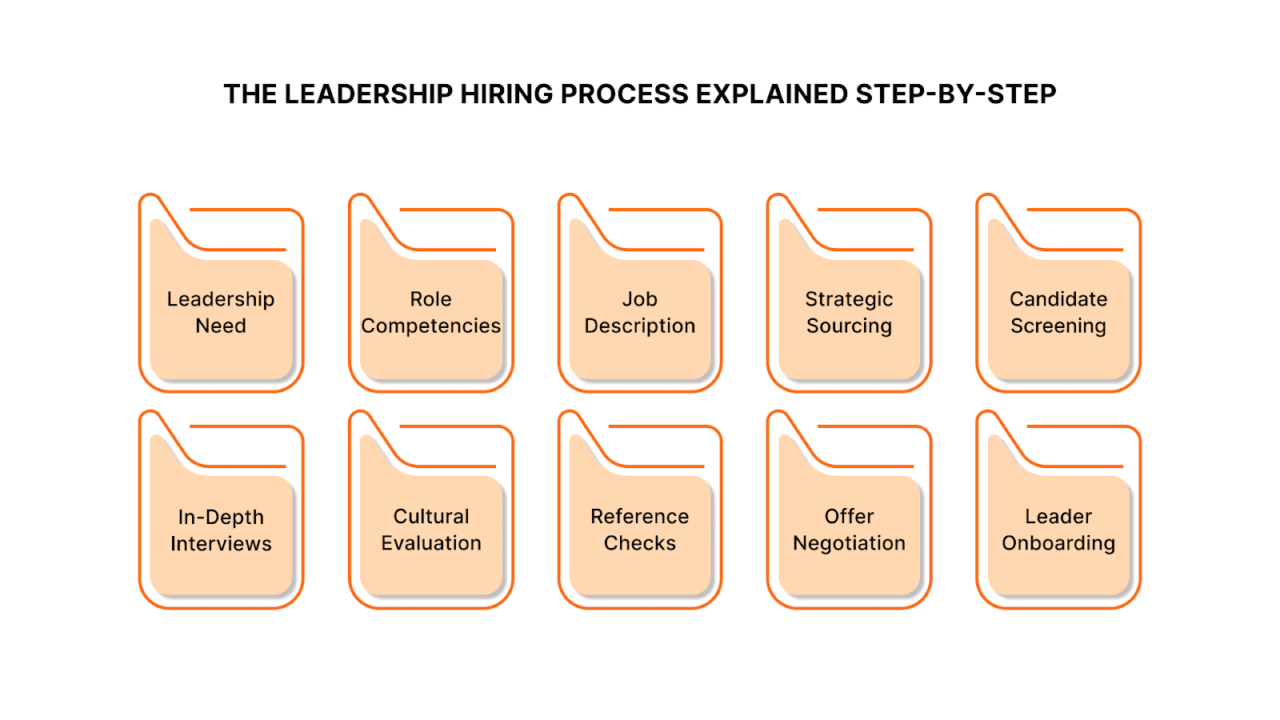
A focused leadership hiring process turns intent into action, aligning every step to find and secure leaders who are capable of creating a lasting impact. Here’s a concise breakdown of the key phases:
Step 1: Identify the Leadership Need
Begin by assessing your organisation’s objectives and pinpointing leadership gaps. Determine whether the role is to drive transformation, manage growth, or maintain stability. This clarity ensures alignment between the leadership role and business goals.
Step 2: Define Role-Specific Competencies
Develop a competency model that outlines the skills, experiences, and behaviours required for the role. This model should reflect the organisation’s values and direction, ensuring that the selected leader can effectively contribute to the company’s success.
Step 3: Craft a Targeted Job Description
Craft a compelling job description that effectively highlights the role’s responsibilities, required competencies, and the significant impact the leader will have on the organisation. Clearly articulate the expectations and opportunities to attract suitable candidates.
Step 4: Source Candidates Strategically
Utilise a mix of internal and external channels to identify potential candidates. Look for executive search firms, industry networks, and employee referrals to build a diverse candidate pool. Proactively engage with passive candidates who may not be actively seeking new opportunities.
Step 5: Screen and Assess Candidates
Implement a rigorous screening process that includes reviewing resumes, conducting initial interviews, and administering psychometric assessments to evaluate candidates. Assess candidates’ technical expertise, leadership qualities, and cultural fit to ensure they meet the defined competencies.
Step 6: Conduct In-Depth Interviews
Organise structured interviews involving key stakeholders, such as CHROs, BU heads, and delivery managers. Utilise behavioural and situational interview techniques to assess candidates’ past experiences and their potential for success in the leadership role.
Step 7: Evaluate Cultural Fit and Leadership Potential
Assess candidates’ alignment with the organisation’s culture and values. Evaluate their ability to lead diverse teams, drive change, and make decisions that align with the company’s long-term vision.
Step 8: Check References and Backgrounds
Conduct thorough reference checks with previous employers, colleagues, and industry contacts to ensure a comprehensive understanding of the candidate’s background. Verify candidates’ employment history, leadership achievements, and reputation within the industry.
Step 9: Extend the Offer and Negotiate Terms
Present a competitive offer that includes compensation, benefits, and performance incentives. Clearly outline the expectations and support available to the new leader to ensure a smooth transition.
Step 10: Onboard and Integrate the New Leader
Implement a comprehensive onboarding program that introduces the new leader to the organisation’s culture, key stakeholders, and strategic objectives. Provide ongoing support and feedback to facilitate their integration and success.
Also Read: What is Lateral Hiring? Meaning & Definition
However, even the most well-designed leadership hiring process can encounter obstacles that derail progress and outcomes. Understanding these common challenges and how to proactively address them is essential to securing leaders who truly drive lasting success.
Common Leadership Hiring Challenges and How to Overcome Them

Leadership hiring is a high-stakes, intricate process fraught with unique challenges that can significantly impact its success.
Identifying these challenges early and implementing targeted solutions is essential for organisations aiming to attract visionary leaders who can drive transformation and growth.
1. Talent Scarcity and Niche Skill Gaps
Identifying leaders with niche skills with the right blend of vision, functional expertise, and cultural fit is becoming increasingly challenging, especially in fast-growing sectors such as IT, BFSI, and manufacturing. This scarcity leads to intense competition for top talent.
How to Overcome:
- Partner with specialised recruiters like V3 Staffing, who have deep industry networks and access to passive candidates.
- Invest in leadership talent mapping and future pipeline development to stay ahead of market demands.
- Broaden sourcing strategies to include emerging hubs beyond metro cities, tapping into regional talent pools.
2. Lengthy and Complex Hiring Cycles
Lengthy recruitment timelines are a common challenge in leadership hiring, often due to multiple stakeholder interviews, rigorous assessments, and protracted decision-making processes. This can lead to candidate drop-off and lost opportunities.
How to Overcome:
- Define a clear, time-bound hiring roadmap with committed decision-makers.
- Streamline processes using technology-enabled scheduling and assessment tools.
- Maintain consistent, transparent communication with candidates to sustain engagement and trust.
3. Misalignment of Expectations and Role Clarity
Unclear or shifting expectations between hiring teams and candidates can lead to misfits that impact employee retention and performance.
How to Overcome:
- Conduct thorough discovery sessions to align on leadership objectives, KPIs, and cultural considerations.
- Utilise competency frameworks as objective criteria during the selection process.
- Involve key stakeholders early and continuously to ensure consensus.
4. Difficulties in Assessing Cultural Fit and Emotional Intelligence
Leadership success depends not only on skills but also on a good fit with the organisational culture and the ability to manage complex relationships effectively. Traditional interviews often fall short in assessing these dimensions.
How to Overcome:
- Incorporate behavioural and situational interview techniques.
- Utilise psychometric and emotional intelligence assessments specifically designed for leadership roles.
- Engage multiple interviewers from diverse functions to gather comprehensive perspectives.
5. Overcoming Bias in Leadership Hiring
Unconscious biases, whether related to gender, background, education, or ethnicity, can influence hiring decisions, limiting diversity and talent potential in leadership. This not only hurts fairness but also impairs innovation and decision-making.
How to Overcome:
- Conduct structured interviews using standardised questions that align with specific competencies.
- Train interviewers on unconscious bias awareness and mitigation techniques.
- Use diverse hiring panels and anonymised resume screening where possible.
- Prioritise diversity, equity, and inclusion (DEI) goals in hiring strategies to widen talent pools.
6. Candidate Counteroffers and Retention Risks
High-calibre leaders frequently receive counteroffers from current employers, which can derail recruitment efforts even at advanced stages.
How to Overcome:
- Develop strong value propositions that focus on career growth, impact, and cultural alignment.
- Engage candidates emotionally and intellectually throughout the process to create a deeper commitment.
- Act swiftly with competitive and transparent offer packages.
7. Managing Confidentiality and Sensitivity
Leadership hiring often involves discreet searches where confidentiality is critical, particularly for high-profile or replacement roles.
How to Overcome:
- Utilise trusted executive search partners with experience in maintaining confidentiality.
- Limit information sharing strictly on a need-to-know basis through secure communication channels.
- Develop clear confidentiality agreements for all parties involved.
Also Read: Contract-to-Hire Meaning, Pros and Cons
Understanding the common hurdles in leadership hiring highlights the need for expert guidance. Here’s how V3 Staffing makes the process more effective and agile, helping you secure the right leaders with confidence.
Why V3 Staffing Is Your Trusted Partner for Executive Search
V3 Staffing offers a comprehensive executive search service tailored to meet the specific leadership needs of organisations across various industries, including IT, BFSI, healthcare, manufacturing, and shared services.
Their approach ensures the identification, attraction, and hiring of top-tier executives and C-level leaders through a customised, strategic process.
- Customised Search Strategy: V3 Staffing creates targeted search plans that focus on the best-fit candidates in each client’s industry, utilising a variety of recruitment methods, including headhunting, advertising, networking, and database searches.
- Thorough Screening and Interviewing: Only the most qualified candidates are shortlisted after a rigorous pre-screening and interview process. This close vetting ensures high-quality matches for senior leadership roles.
- End-to-End Hiring Support: V3 Staffing manages the entire hiring lifecycle, including reference checks, background verification, salary negotiations, and onboarding, ensuring a seamless process for clients.
- Focus on Speed and Quality: With a goal to fill key leadership positions quickly and effectively, V3 Staffing’s expert team combines deep domain knowledge with technology-enabled processes to reduce hiring time without compromising quality.
- Pan-India Reach: Based in Hyderabad, with a strong presence across Bengaluru, Chennai, Pune, Mumbai, and the Delhi NCR region, V3 Staffing accesses diverse talent pools across India’s core business hubs.
- Client-Centric Approach: They prioritise alignment not only with the job role but also with the client’s culture and strategic goals, ensuring long-term leadership success.
If you’re ready to bring on board transformative leadership that aligns with your vision and drives growth, V3 Staffing is here to support you every step of the way.
Conclusion
Leadership hiring is a crucial journey that requires precision, strategy, and a profound understanding of both business objectives and organisational culture. By honing in on the right competencies, engaging key stakeholders, and cultivating a sustainable talent pipeline, companies can secure visionary leaders who inspire transformation and nurture enduring growth.
At V3 Staffing, we specialise in leadership hiring that aligns with your unique needs and objectives. Let us help you find the leaders who will shape your company’s future. Contact V3 Staffing today to start building your winning leadership team.
FAQs
- How long does the leadership hiring process take?
The process typically spans several weeks to months, depending on the role’s complexity, industry, and the availability of suitable candidates. It involves multiple stages, including needs analysis, competency mapping, sourcing, assessments, and onboarding.
- What role do executive search firms play in leadership hiring?
Executive search firms specialise in identifying and recruiting top-tier leadership talent. They utilise extensive networks, industry expertise, and rigorous evaluation methods to match organisations with leaders who align with their strategic objectives and cultural values.
- What is the difference between executive search and leadership hiring?
Executive search is a specialised recruitment method often used in leadership hiring to proactively identify and attract high-caliber leaders, particularly passive candidates who are not actively seeking new opportunities. Leadership hiring encompasses the broader process of hiring, onboarding, and integrating leaders.
- What roles are typically filled through leadership hiring?
Leadership hiring is primarily used for C-suite positions (e.g., CEO, CFO, CTO), directors, senior managers, and other top executive roles that significantly influence the company’s strategic direction and overall performance.
- What are the best practices for successful leadership hiring?
Best practices involve defining clear leadership competencies, leveraging diverse sourcing channels, utilising behavioral and situational interviews, prioritising cultural fit, engaging multiple stakeholders, maintaining transparent communication, and developing leadership pipelines to meet future needs.

